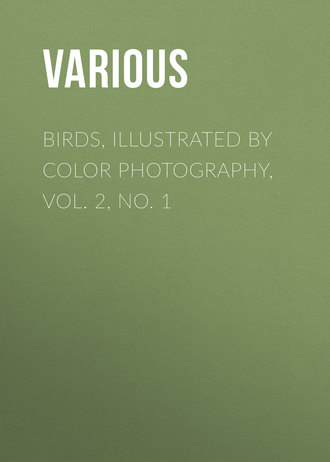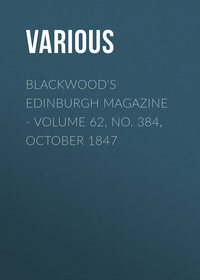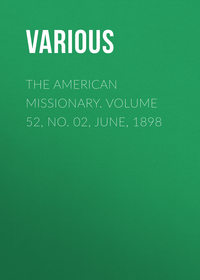 полная версия
полная версияBirds, Illustrated by Color Photography, Vol. 2, No. 1

Various
Birds, Illustrated by Color Photography, Vol. 2, No. 1 July 1897
INTRODUCTION
This is the second volume of a series intended to present, in accurate colored portraiture, and in popular and juvenile biographical text, a very considerable portion of the common birds of North America, and many of the more interesting and attractive specimens of other countries, in many respects superior to all other publications which have attempted the representation of birds, and at infinitely less expense. The appreciative reception by the public of Vol. I deserves our grateful acknowledgement. Appearing in monthly parts, it has been read and admired by thousands of people, who, through the life-like pictures presented, have made the acquaintance of many birds, and have since become enthusiastic observers of them. It has been introduced into the public schools, and is now in use as a text book by hundreds of teachers, who have expressed enthusiastic approval of the work and of its general extension. The faithfulness to nature of the pictures, in color and pose, have been commended by such ornithologists and authors as Dr. Elliott Coues, Mr. John Burroughs, Mr. J. W. Allen, editor of The Auk, Mr. Frank M. Chapman, Mr. J. W. Baskett, and others.
The general text of Birds – the biographies – has been conscientiously prepared from the best authorities by a careful observer of the feather-growing denizens of the field, the forest, and the shore, while the juvenile autobiographies have received the approval of the highest ornithological authority.
The publishers take pleasure in the announcement that the general excellence of Birds will be maintained in subsequent volumes. The subjects selected for the third and fourth volumes – many of them – will be of the rare beauty in which the great Audubon, the limner par excellence of birds, would have found “the joy of imitation.”
Nature Study Publishing Company.BIRD SONG
IT SHOULD not be overlooked by the young observer that if he would learn to recognize at once any particular bird, he should make himself acquainted with the song and call notes of every bird around him. The identification, however, of the many feathered creatures with which we meet in our rambles has heretofore required so much patience, that, though a delight to the enthusiast, few have time to acquire any great intimacy with them. To get this acquaintance with the birds, the observer has need to be prepared to explore perilous places, to climb lofty trees, and to meet with frequent mishaps. To be sure if every veritable secret of their habits is to be pried into, this pursuit will continue to be plied as patiently as it has ever been. The opportunity, however, to secure a satisfactory knowledge of bird song and bird life by a most delightful method has at last come to every one.
A gentleman who has taken a great interest in Birds from the appearance of the first number, but whose acquaintance with living birds is quite limited, visited one of our parks a few days ago, taking with him the latest number of the magazine. His object, he said, was to find there as many of the living forms of the specimens represented as he could. “Seating myself amidst a small grove of trees, what was my delight at seeing a Red Wing alight on a telegraph wire stretching across the park. Examining the picture in Birds I was somewhat disappointed to find that the live specimen was not so brilliantly marked as in the picture. Presently, however, another Blackbird alighted near, who seemed to be the veritable presentment of the photograph. Then it occured to me that I had seen the Red Wing before, without knowing its name. It kept repeating a rich, juicy note, oncher-la-ree-e! its tail tetering at quick intervals. A few days later I observed a large number of Red Wings near the Hyde Park water works, in the vicinity of which, among the trees and in the marshes, I also saw many other birds unknown to me. With Birds in my hands, I identified the Robin, who ran along the ground quite close to me, anon summoning with his beak the incautious angle worm to the surface. The Jays were noisy and numerous, and I observed many new traits in the Wood Thrush, so like the Robin that I was at first in some doubt about it. I heard very few birds sing that day, most of them being busy in search of food for their young.”
[continued on page 17.]THE BALD-HEADED EAGLE
Dear Boys and Girls:
I had hoped to show you the picture of the eagle that went through the war with the soldiers. They called him “Old Abe.” You will find on page 35 a long story written about him. Ask some one to read it to you.
I could not get “Old Abe,” or you should now be looking at his picture. He is at present in Wisconsin, and his owner would not allow him to be taken from home.
I did the next best thing, and found one that was very much like him. They are as near alike as two children of a family. Old Abe’s feathers are not quite so smooth, though. Do you wonder, after having been through the war? He is a veteran, isn’t he?
The picture is that of a Bald-headed Eagle. He is known, also, by other names, such as White-headed Eagle, Bird of Washington, Sea Eagle.
You can easily see by the picture that he is not bald-headed. The name White-headed would seem a better name. It is because at a distance his head and neck appear as though they were covered with a white skin.
He is called “Sea Eagle” because his food is mostly fish. He takes the fish that are thrown upon the shores by the waves, and sometimes he robs the Fish Hawk of his food.
This mighty bird usually places his large nest in some tall tree. He uses sticks three to five feet long, large pieces of sod, weeds, moss, and whatever he can find.
The nest is sometimes five or six feet through. Eagles use the same nest for years, adding to it each year.
Young eagles are queer looking birds. When hatched, they are covered with a soft down that looks like cotton.
Their parents feed them, and do not allow them to leave the nest until they are old enough to fly. When they are old enough, the mother bird pushes them out of the nest. She must be sure that they can fly, or she would not dare do this. Don’t you think so?
THE BALD-HEADED EAGLE
THIS mighty bird of lofty flight is a native of the whole of North America, and may be seen haunting the greater portions of the sea coasts, as well as the mouths of large rivers. He is sometimes called the White-headed Eagle, the American Sea Eagle, the Bird of Washington, the Washington Eagle, and the Sea Eagle. On account of the snowy white of his head and neck, the name Bald Eagle has been applied to him more generally than any other.
Sea-faring men are partial to young Eagles as pets, there being a well established superstition among them that the ship that carries the “King of Birds” can never go down. The old Romans, in selecting the Eagle as an emblem for their imperial standard, showed this superstitious belief, regarding him as the favorite messenger of Jupiter, holding communion with heaven. The Orientals, too, believed that the feathers of the Eagle’s tail rendered their arrows invincible. The Indian mountain tribes east of Tennessee venerated the Eagle as their bird of war, and placed a high value on his feathers, which they used for headdresses and to decorate their pipes of peace.
The United States seems to have an abiding faith in the great bird, as our minted dollars show.
The nest of the Bald Eagle is usually placed upon the top of a giant tree, standing far up on the side of a mountain, among myriads of twining vines, or on the summit of a high inaccessible rock. The nest in the course of years, becomes of great size as the Eagle lays her eggs year after year in the same nest, and at each nesting season adds new material to the old nest. It is strongly and comfortably built with large sticks and branches, nearly flat, and bound together with twining vines. The spacious interior is lined with hair and moss, so minutely woven together as to exclude the wind. The female lays two eggs of a brownish red color, with many dots and spots, the long end of the egg tapering to a point. The parents are affectionate, attend to their young as long as they are helpless and unfledged, and will not forsake them even though the tree on which they rest be enveloped in flames. When the Eaglets are ready to fly, however, the parents push them from the perch and trust them to the high atmospheric currents. They turn them out, so to speak, to shift for themselves.
The Bald Eagle has an accommodating appetite, eating almost anything that has ever had life. He is fond of fish, without being a great fisher, preferring to rob the Fish-hawk of the fruits of his skillful labor. Sitting upon the side of a mountain his keen vision surveys the plain or valley, and detects a sheep, a young goat, a fat turkey or rooster, a pig, a rabbit or a large bird, and almost within an eye-twinkle he descends upon his victim. A mighty grasp, a twist of his talons, and the quarry is dead long before the Eagle lays it down for a repast. The impetuosity and skill with which he pursues, overtakes and robs the Fish-hawk, and the swiftness with which the Bald Eagle darts down upon and seizes the booty, which the Hawk has been compelled to let go, is not the least wonderful part of this striking performance.
The longevity of the Eagle is very great, from 80 to 160 years.
THE SEMI-PALMATED RING PLOVER
IN THEIR habits the Plovers are usually active; they run and fly with equal facility, and though they rarely attempt to swim, are not altogether unsuccessful in that particular.
The Semi-palmated Ring Plover utters a plaintive whistle, and during the nesting season can produce a few connected pleasing notes. The three or four pear-shaped, variagated eggs are deposited in a slight hollow in the ground, in which a few blades of grass are occasionally placed. Both parents assist in rearing the young. Worms, small quadrupeds, and insects constitute their food. Their flesh is regarded as a delicacy, and they are therefore objects of great attraction to the sportsman, although they often render themselves extremely troublesome by uttering their shrill cry and thus warning their feathered companions of the approach of danger. From this habit they have received the name of “tell-tales.” Dr. Livingstone said of the African species: “A most plaguey sort of public spirited individual follows you everywhere, flying overhead, and is most persevering in his attempts to give fair warning to all animals within hearing to flee from the approach of danger.”
The American Ring Plover nests as far north as Labrador, and is common on our shores from August to October, after which it migrates southward. Some are stationary in the southern states. It is often called the Ring Plover, and has been supposed to be identical with the European Ringed Plover.
It is one of the commonest of shore birds. It is found along the beaches and easily identified by the complete neck ring, white upon dark and dark upon light. Like the Sandpipers the Plovers dance along the shore in rhythm with the wavelets, leaving sharp half-webbed footprints on the wet sand. Though usually found along the seashore, Samuels says that on their arrival in spring, small flocks follow the courses of large rivers, like the Connecticut. He also found a single pair building on Muskeget, the famous haunt of Gulls, off the shore of Massachusetts. It has been found near Chicago, Illinois, in July.
THE RING PLOVER
Plovers belong to a class of birds called Waders.
They spend the winters down south, and early in the spring begin their journey north. By the beginning of summer they are in the cold north, where they lay their eggs and hatch their young. Here they remain until about the month of August, when they begin to journey southward. It is on their way back that we see most of them.
While on their way north, they are in a hurry to reach their nesting places, so only stop here and there for food and rest.
Coming back with their families, we often see them in ploughed fields. Here they find insects and seeds to eat.
The Ring Plover is so called from the white ring around its neck.
These birds are not particular about their nests. They do not build comfortable nests as most birds do. They find a place that is sheltered from the north winds, and where the sun will reach them. Here they make a rude nest of the mosses lying around.
The eggs are somewhat pointed, and placed in the nest with the points toward the center. In this way the bird can more easily cover the eggs.
We find, among most birds, that after the nest is made, the mother bird thinks it her duty to hatch the young.
The father bird usually feeds her while she sits on the eggs. In some of the bird stories, you have read how the father and mother birds take turns in building the nest, sitting on the nest, and feeding the young.
Some father birds do all the work in building the nest, and take care of the birds when hatched.
Among plovers, the father bird usually hatches the young, and lets the wife do as she pleases.
After the young are hatched they help each other take care of them.
Plovers have long wings, and can fly very swiftly.
The distance between their summer and winter homes is sometimes very great.
THE MALLARD DUCK
We should probably think this the most beautiful of ducks, were the Wood Duck not around.
His rich glossy-green head and neck, snowy white collar, and curly feathers of the tail are surely marks of beauty.
But Mr. Mallard is not so richly dressed all of the year. Like a great many other birds, he changes his clothes after the holiday season is over. When he does this, you can hardly tell him from his mate who wears a sober dress all the year.
Most birds that change their plumage wear their bright, beautiful dress during the summer. Not so with Mr. Mallard. He wears his holiday clothes during the winter. In the summer he looks much like his mate.
Usually the Mallard family have six to ten eggs in their nest. They are of a pale greenish color – very much like the eggs of our tame ducks that we see about the barnyards.
Those who have studied birds say that our tame ducks are descendants of the Mallards.
If you were to hear the Mallard’s quack, you could not tell it from that of the domestic duck.
The Mallard usually makes her nest of grass, and lines it with down from her breast. You will almost always find it on the ground, near the water, and well sheltered by weeds and tall grasses.
It isn’t often you see a duck with so small a family. It must be that some of the ducklings are away picking up food.
Do you think they look like young chickens?
THE MALLARD DUCK
THE Mallard Duck is generally distributed in North America, migrating south in winter to Panama, Cuba, and the Bahamas. In summer the full grown male resembles the female, being merely somewhat darker in color. The plumage is donned by degrees in early June, and in August the full rich winter dress is again resumed. The adult males in winter plumage vary chiefly in the extent and richness of the chestnut of the breast.
The Mallard is probably the best known of all our wild ducks, being very plentiful and remarkable on account of its size. Chiefly migrant, a few sometimes remain in the southern portion of Illinois, and a few pairs sometimes breed in the more secluded localities where they are free from disturbance. Its favorite resorts are margins of ponds and streams, pools and ditches. It is an easy walker, and can run with a good deal of speed, or dive if forced to do so, though it never dives for food. It feeds on seeds of grasses, fibrous roots of plants, worms, shell fish, and insects. In feeding in shallow water the bird keeps the hind part of its body erect, while it searches the muddy bottom with its bill. When alarmed and made to fly, it utters a loud quack, the cry of the female being the louder. “It feeds silently, but after hunger is satisfied, it amuses itself with various jabberings, swims about, moves its head backward and forward, throws water over its back, shoots along the surface, half flying, half running, and seems quite playful. If alarmed, the Mallard springs up at once with a bound, rises obliquely to a considerable height, and flies off with great speed, the wings producing a whistling sound. The flight is made by repeated flaps, without sailing, and when in full flight its speed is hardly less than a hundred miles an hour.”
Early in spring the male and female seek a nesting place, building on the ground, in marshes or among water plants, sometimes on higher ground, but never far from water. The nest is large and rudely made of sedges and coarse grasses, seldom lined with down or feathers. In rare instances it nests in trees, using the deserted nests of hawks, crows, or other large birds. Six or eight eggs of pale dull green are hatched, and the young are covered over with down. When the female leaves the nest she conceals the eggs with hay, down, or any convenient material. As soon as hatched the chicks follow the mother to the water, where she attends them devotedly, aids them in procuring food, and warns them of danger. While they are attempting to escape, she feigns lameness to attract to herself the attention of the enemy. The chicks are wonderfully active little fellows, dive quickly, and remain under water with only the bill above the surface.
On a lovely morning, before the sun has fairly indicated his returning presence, there can be no finer sight than the hurrying pinions, or inspiring note than the squawk, oft repeated, of these handsome feathered creatures, as they seek their morning meal in the lagoons and marshes.
THE AMERICAN AVOCET
WHITE SNIPE, Yelper, Lawyer, and Scooper are some of the popular names applied in various localities to this remarkably long-legged and long and slender-necked creature, which is to be found in temperate North America, and, in winter, as far south as Cuba and Jamaica. In north-eastern Illinois the Avocet generally occurs in small parties the last of April and the first of May, and during September and the early part of October, when it frequents the borders of marshy pools. The bird combines the characteristics of the Curlew and the Godwit, the bill being recurved.
The cinnamon color on the head and neck of this bird varies with the individual; sometimes it is dusky gray around the eye, especially in the younger birds.
The Avocet is interesting and attractive in appearance, without having any especially notable characteristics. He comes and goes and is rarely seen by others than sportsmen.
BIRD SONG – Continued from page 1
Many of our singing birds may be easily identified by any one who carries in his mind the images which are presented in our remarkable pictures. See the birds at home, as it were, and hear their songs.
Those who fancy that few native birds live in our parks will be surprised to read the following list of them now visible to the eyes of so careful an observer as Mr. J. Chester Lyman.
“About the 20th of May I walked one afternoon in Lincoln Park with a friend whose early study had made him familiar with birds generally, and we noted the following varieties:

“On a similar walk, one week earlier, we saw about the same number of varieties, including, however, the Yellow Breasted Chat, and the Mourning, Bay Breasted, and Blue Yellow Backed Warblers.”
The sweetest songsters are easily accessible, and all may enjoy their presence.
C. C. Marble.[to be continued.]THE CANVAS-BACK DUCK
WHITE-BACK, Canard Cheval, (New Orleans,) Bull-Neck, and Red-Headed Bull-Neck, are common names of the famous Canvas-Back, which nests from the northern states, northward to Alaska. Its range is throughout nearly all of North America, wintering from the Chesapeake southward to Guatemala.
“The biography of this duck,” says Mabel Osgood Wright, “belongs rather to the cook-book than to a bird list,” even its most learned biographers referring mainly to its “eatable qualities,” Dr. Coues even taking away its character in that respect when he says “there is little reason for squealing in barbaric joy over this over-rated and generally under-done bird; not one person in ten thousand can tell it from any other duck on the table, and only then under the celery circumstances,” referring to the particular flavor of its flesh, when at certain seasons it feeds on vallisneria, or “water celery,” which won its fame. This is really not celery at all, but an eel-grass, not always found through the range of the Canvas-Back. When this is scarce it eats frogs, lizards, tadpoles, fish, etc., so that, says Mrs. Osgood, “a certificate of residence should be sold with every pair, to insure the inspiring flavor.”
The opinion held as to the edible qualities of this species varies greatly in different parts of the country. No where has it so high a reputation as in the vicinity of Chesapeake Bay, where the alleged superiority of its flesh is ascribed to the abundance of “water celery.” That this notion is erroneous is evident from the fact that the same plant grows in far more abundance in the upper Mississippi Valley, where also the Canvas-Back feeds on it. Hence it is highly probable that fashion and imagination, or perhaps a superior style of cooking and serving, play a very important part in the case. In California, however, where the “water celery” does not grow, the Canvas-Back is considered a very inferior bird for the table.
It has been hunted on Chesapeake Bay and its tributaries with such inconsiderate greed that its numbers have been greatly reduced, and many have been driven to more southern waters.
In and about Baltimore, the Canvas-Back, like the famous terrapin, is in as high favor for his culinary excellence, as are the women for beauty and hospitality. To gratify the healthy appetite of the human animal this bird was doubtless sent by a kind Providence, none the less mindful of the creature comforts and necessities of mankind than of the purely aesthetic senses.
THE WOOD DUCK
A great many people think that this is the most beautiful bird of North America. It is called Wood Duck because it usually makes its nest in the hollow of a tree that overhangs the water. If it can find a squirrel’s or woodpecker’s hole in some stump or tree, there it is sure to nest.
A gentleman who delighted in watching the Wood Duck, tells about one that built her nest in the hollow of a tree that hung over the water. He was anxious to see how the little ones, when hatched, would get down.
In a few days he knew that the ducklings were out, for he could hear their pee, pee, pee. They came to the edge of the nest, one by one, and tumbled out into the water.
You know a duck can swim as soon as it comes out of the egg.
Sometimes the nest is in the hollow of a tree that is a short distance from the water.
Now how do you suppose the ducklings get there as they do?
If the nest is not far from the ground, the mother bird lets them drop from it on the dried grass and leaves under the tree. She then carries them in her bill, one by one, to the water and back to the nest.
If the nest should be far from the ground, she carries them down one by one.
This same gentleman says that he once saw a Wood Duck carry down thirteen little ones in less than ten minutes. She took them in her bill by the back of the neck or the wing.
When they are a few days old she needs only to lead the way and the little ones will follow.
The Wood Duck is also called Summer Duck. This is because it does not stay with us during the winter, as most ducks do.
It goes south to spend the winter and comes back north early in the spring.
THE WOOD DUCK
OUITE the most beautiful of the native Ducks, with a a richness of plumage which gives it a bridal or festive appearance, this bird is specifically named Spousa, which means betrothed. It is also called Summer Duck, Bridal Duck, Wood Widgeon, Acorn Duck and Tree Duck.









